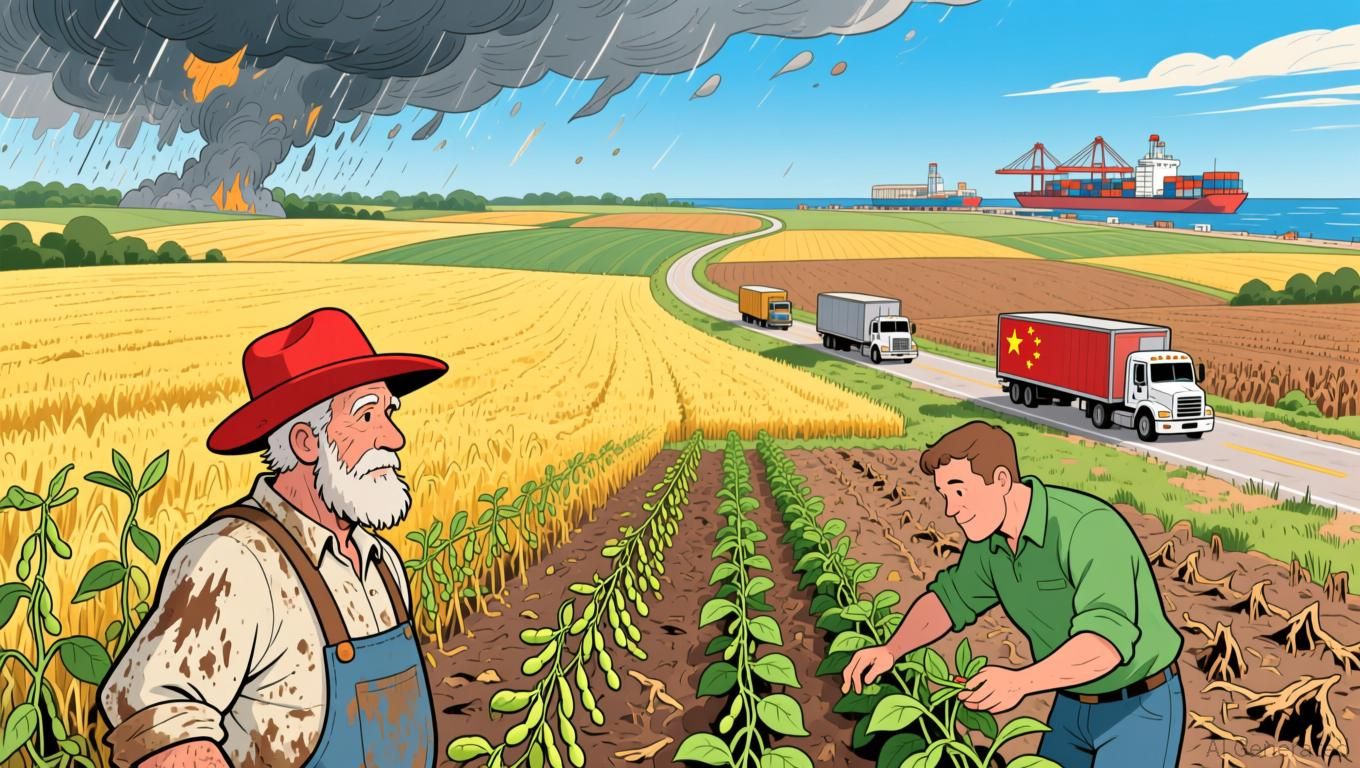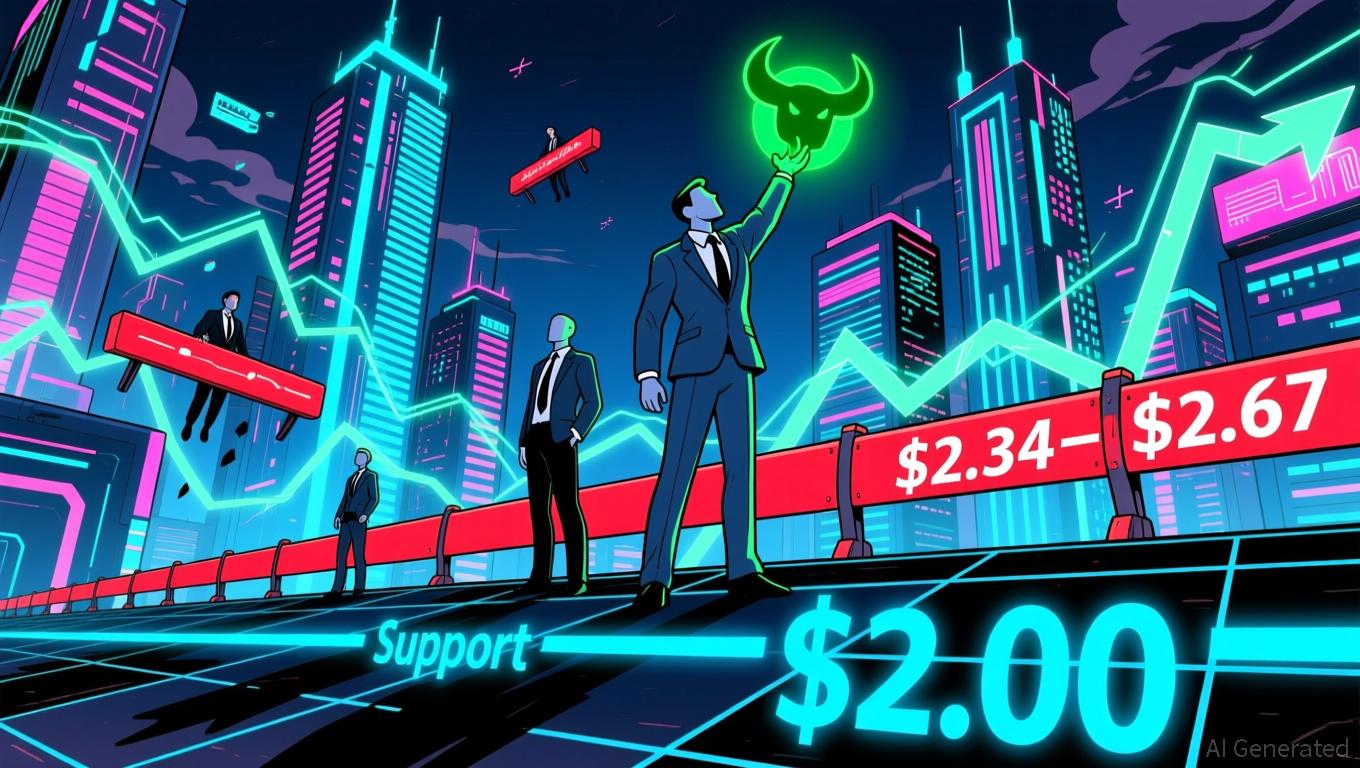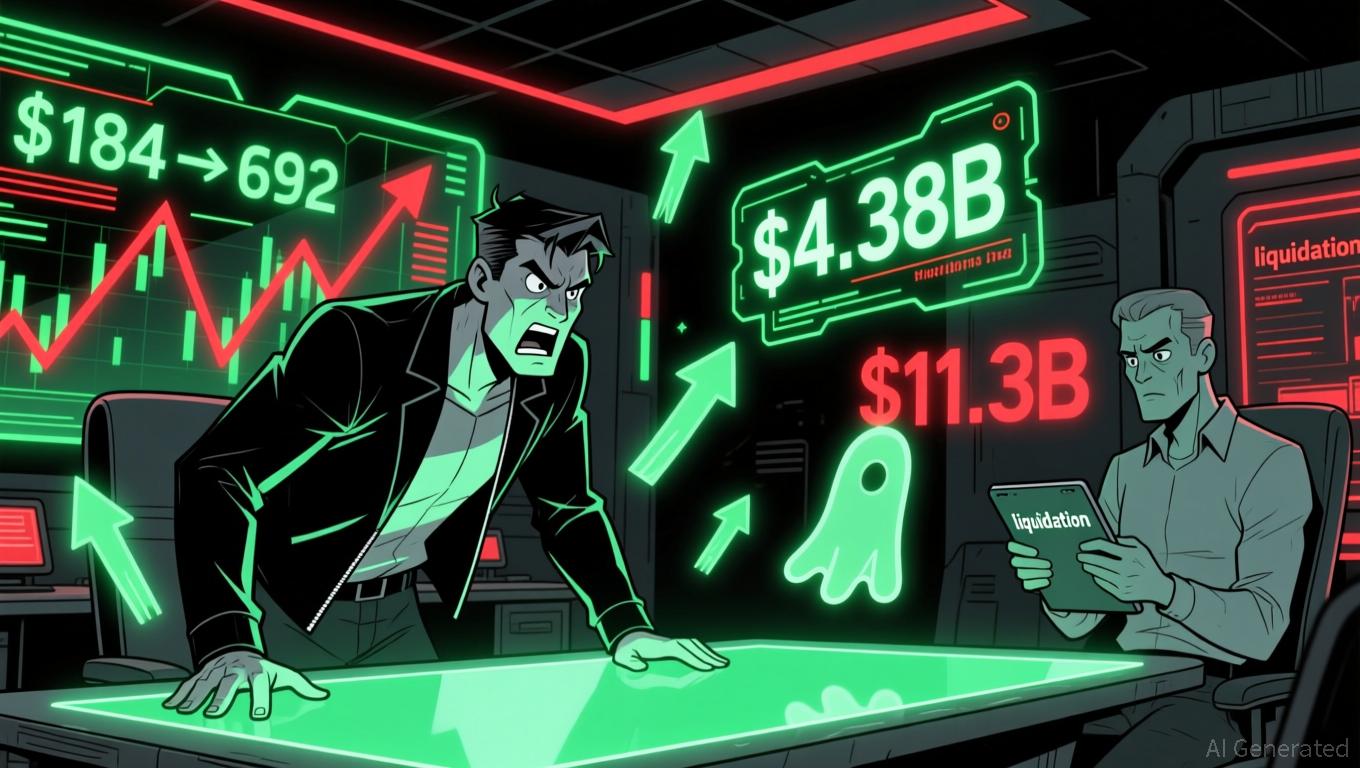China’s Influence on Soybean Trade and a Failing System Push U.S. Farmers into Turmoil
- U.S. rural farmers face crisis as China's reduced soybean purchases and trade disputes drive plummeting prices and high debt. - Federal aid programs provide short-term relief but fail to address systemic issues like inflated land prices and structural profitability gaps. - Trump's trade policy adjustments offer mixed signals, temporarily easing tariffs on imports while China maintains residual soybean duties as geopolitical leverage. - Record farm debt and grocery insecurity highlight a K-shaped recovery
The agricultural economy in rural America is experiencing an uneven recovery, with government assistance reaching emergency levels as ongoing trade conflicts and deep-rooted challenges widen the gap between struggling farmers and more stable agricultural sectors. The situation has worsened due to China's ongoing hesitation to resume significant U.S. soybean imports, leaving farmers in the Midwest facing falling prices, rising production expenses, and unpredictable trade regulations. Meanwhile,
The trade standoff over soybeans between the U.S. and China has become a central issue in the economic hardships facing rural communities. Since October 2025, China has committed to buying 12 million metric tons of U.S. soybeans—less than half of the 26.8 million metric tons it imported in 2024. This gap has left Wisconsin's soybean farmers—whose industry is worth $1.3 billion a year—dealing with losses as global prices drop. "The unpredictability of trade policy has added more pressure on farmers who are already struggling to make future plans," stated Paul Mitchell, an agricultural economics professor at the University of Wisconsin-Madison

The federal response has included emergency support, such as $30 billion in relief for Emergency Commodity Assistance and Supplemental Disaster Relief programs. Still, critics argue these efforts fall short, often driving up land values instead of improving farm profitability. "Farmers are stuck in a dysfunctional system," said Joe Maxwell from Action Farm Fund, a farmer advocacy group. "We keep spending on temporary solutions while the core issues in agriculture remain unaddressed"
Recent changes in trade policy under President Donald Trump have sent mixed messages. On November 13, Trump issued an executive order that exempts major agricultural imports—such as Indian spices, coffee, and tropical fruits—from a 50% tariff increase, citing concerns over rising domestic prices. This move, part of broader trade talks, is intended to lower food costs for Americans and reduce pressure on importers. In a separate agreement, China has paused retaliatory tariffs on U.S. soybeans in return for reduced U.S. tariffs, though a 13% duty still applies
The pronounced split in the farm economy underscores the vulnerability of rural livelihoods. While large agribusinesses and major producers are able to adjust to changing trade conditions, smaller farms are facing severe risks. The latest figures from the Federal Reserve indicate that farm debt has hit unprecedented levels, with
Disclaimer: The content of this article solely reflects the author's opinion and does not represent the platform in any capacity. This article is not intended to serve as a reference for making investment decisions.
You may also like
XRP News Today: Nine XRP ETFs Set to Debut, Pushing Price Range to $2.40–$2.70
- Nine XRP ETFs, including Franklin Templeton's EZRP, launch Nov 18-25, injecting institutional capital and boosting liquidity. - XRP trades at $2.24, with technical analysis targeting $2.40–$2.70 if $2.15 support holds, amid $768M in whale accumulation. - Regulatory clarity from recent rulings contrasts with unresolved Ripple vs. SEC case, while exchange-held supply drops to $2.8B. - Analysts project $4–8B in first-year ETF inflows, but warn of volatility risks if $2.20 support breaks amid broader crypto

Bitcoin News Update: MicroStrategy's Optimism on Bitcoin Faces Skepticism as Shares Fall by 35%
- MicroStrategy's Saylor dismissed Bitcoin sell rumors, reaffirming aggressive accumulation amid crypto volatility. - Company's latest $835M purchase added 8,178 BTC, boosting total holdings to 649,870 coins valued at $61.3B. - Saylor defended financial strategy, claiming 80% BTC price drop would still leave balance sheet "overcollateralized." - Stock fell 35% YTD despite bullish stance, as critics question equity dilution and dividend sustainability. - Long-term vision includes $1T Bitcoin balance sheet f
Solana News Update: Solana ETFs Draw $370 Million in Investments While Token Approaches $100 Support Level
- VanEck submitted a Form 8-A for its Solana ETF, nearing SEC approval as the first U.S. spot SOL ETF candidate. - Canary Capital paused Solana ETF filings to await regulatory clarity, contrasting with VanEck's aggressive filing strategy. - Solana's price fell to $142 amid $370M ETF inflows, highlighting divergent institutional demand and bearish technical indicators. - Staking features and institutional adoption boost long-term SOL appeal, but short-term risks include $100 support breakdown and regulatory

ZEC drops 10.72% over 24 hours as significant short positions are liquidated and trading volume increases
- ZEC fell 10.72% in 24 hours but surged 23.62% in 7 days, driven by massive short liquidations and rising trading volume. - High-profile short positions lost $3.28M (Roobet/Stake.com) and $21.75M (Hyperliquid), as ZEC's price broke $700 and hit $11.3B market cap. - Institutional confidence grows with BitMEX's Arthur Hayes holding ZEC as second-largest asset, while analysts warn of overbought conditions and potential pullbacks.
